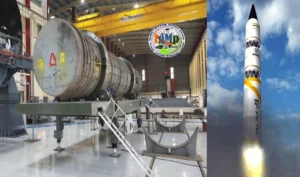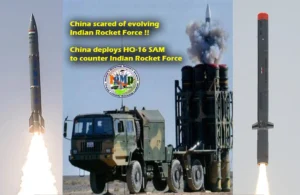Source : Moneycontrol
 |
| Representative Image |
Amidst growing signs of Taliban’s willingness to explore options beyond Pakistan, engagement between India and Afghanistan has generated debate in the strategic community over whether this was an opportunity for Delhi to regain its foothold in the war-ravaged country.
India has a long history of engagement with the Afghan people. For the past two decades, it has spent billions of dollars on humanitarian assistance and on training and capacity-building in Afghanistan.
The India-run hospital in Kabul is one of the most reliable medical facilities in the country. The wide-range of people-oriented projects India implemented in the country has endeared it to the Afghans.
But last August, the Indian embassy had to shut shop when Taliban soldiers took over Afghanistan as the US troops made a chaotic withdrawal from the country, ending a 20-year-long military campaign.
In the past India has been a victim of the Pakistan-Taliban nexus. Terrorist groups operating within Afghanistan have carried out several deadly attacks on Indian officials and assets, including an assault on the embassy.
However, in recent years, Indian and Taliban officials have maintained contact and developed a working relationship with each other. When Kabul reached out to Delhi for help in dealing with the deteriorating situation in the wake of an acute food and health crisis and a deadly earthquake that killed about a 1,000 people, India stepped up.
In June, India sent two delegations to Kabul to assist and oversee the delivery of its food and medical supplies, that also included Covid-19 vaccines.
During the visits, Indian diplomat J. P. Singh, who deals with the Pakistan-Iran-Afghanistan division in the Ministry of External Affairs, held discussions with Taliban’s acting foreign minister Amir Khan Mottaki, and deputy foreign minister Sher Mohammad Abbas Stanikzai. It led to the re-opening of the Indian embassy.
The Indian delegation was assured by Taliban leaders that no terrorist groups will be allowed to use Afghan soil to carry out attacks against Indian personnel or assets in the country.
Officially, India says its long-standing links with Afghan society and its development agenda, including humanitarian assistance, will “guide its approach” in the country.
Experts point out that though the food and health crises have deepened contact between the two sides, Taliban had been trying to reach out to India for some time. They say that though most Taliban leaders are beholden to Pakistan for the support and shelter they provided to Taliban fighters and their families, there is now a desire to get out of Pakistan’s tight embrace.
Some recent developments show that the Taliban takeover of Afghanistan has not quite worked out to Pakistan’s advantage. Taliban’s hardline policy towards women, and its poor track record on human rights and in dealing with ethnic minorities, has led the US and European countries to shun them. All their financial assets have been frozen, and though China and Russia engage with them, international recognition for the Taliban-led regime is a long way off.
Pakistan has mostly used the country to provide it with “strategic depth” against India, but the Taliban regime has frequently shown an independent streak that has gone against Islamabad’s interest.
It has opposed Pakistan’s attempt to put wire-fencing to secure the border between the two countries. Afghans have never recognized the Durand Lie that separates the Pashtuns on either side. The Taliban has also taken a similar position.
Also, though there has been a significant increase in Tekrik-i-Taliban Pakistan’s (TTP) attacks against Pakistan from Afghanistan, Taliban leaders have not handed over any TTP leader or cadre to the Pakistani army. To curb the TTP attacks against Pakistan, the Taliban has got the two sides to talk.
Recently, Pakistan’s attempt to buy cheap coal from Afghanistan to ease its energy crisis was scuttled by Kabul as it imposed a 30 per cent custom’s duty on coal exports to Pakistan. The decision may have stemmed from the need to generate much-needed foreign exchange in the face of heavy western sanctions. But it demonstrated that the Taliban was not willing to sacrifice its interest to bail out Pakistan.
However, India does not want to read too much into these developments and interpret them as a growing chasm between Pakistan and Taliban.
Indian officials say it was the Taliban that reached out to India, and the engagement between the two should not be seen as India’s endorsement of Kabul’s policy towards women and the country’s minorities.
India wants to safeguard its assets and interests in Afghanistan and pursue its humanitarian work. It wants to be assured that Pakistani terror groups Lashkar-e-Taiba and Jaish-e-Mohammad, whose presence in Afghanistan is widely known, will not be allowed to carry out attacks and anti-India activities there.Kabul has assured India of the safety and security of its people and assets, but with a plethora of terrorist groups present in the country, Delhi will have to see if Taliban can walk the talk.





